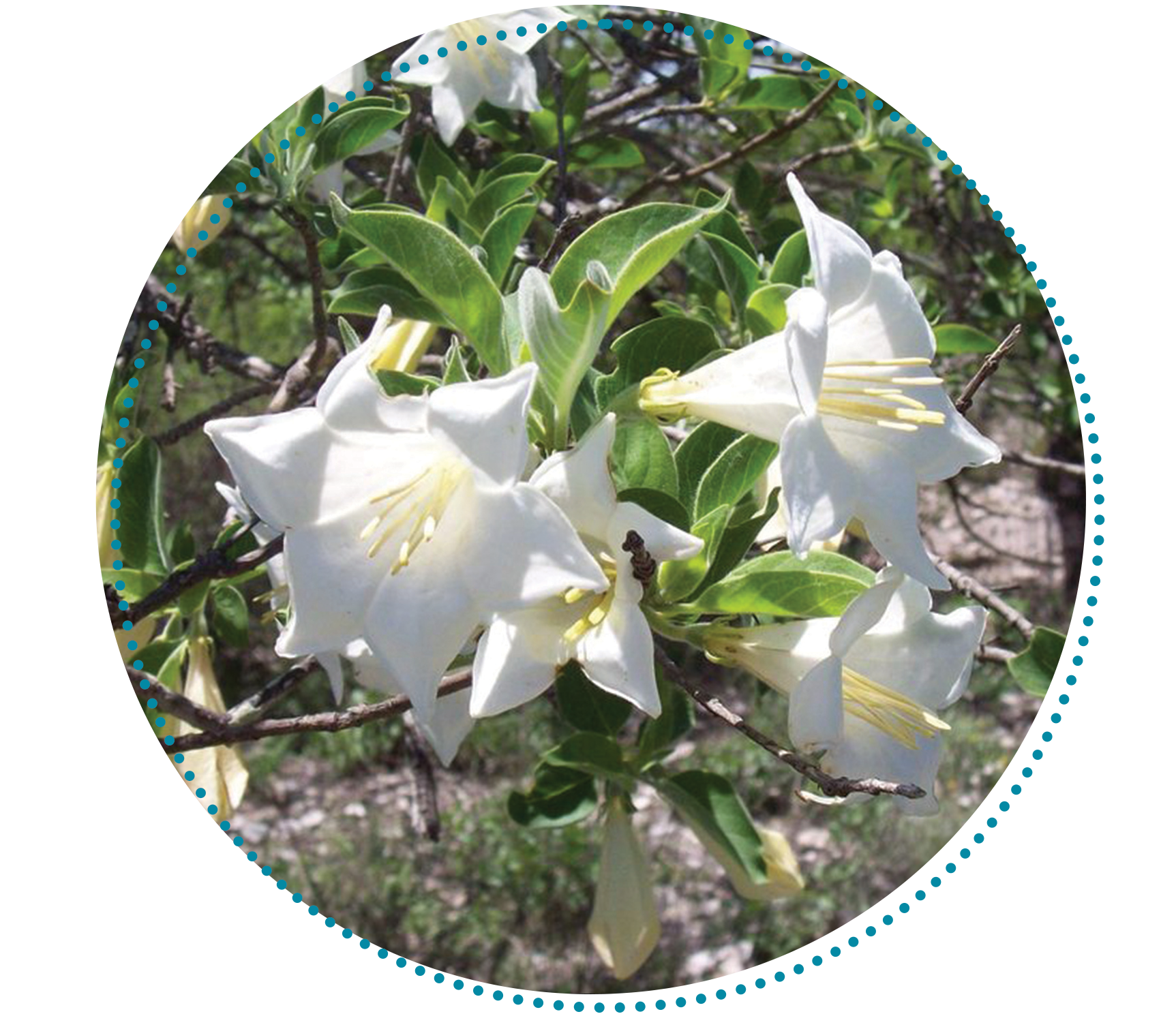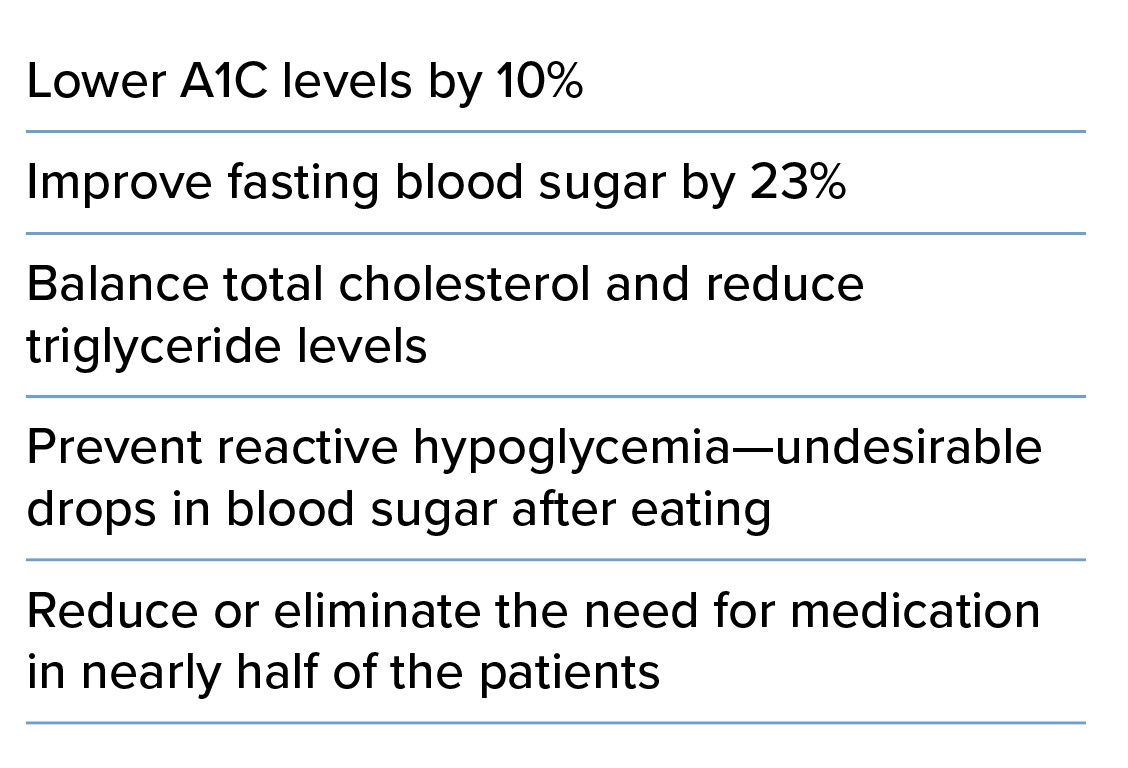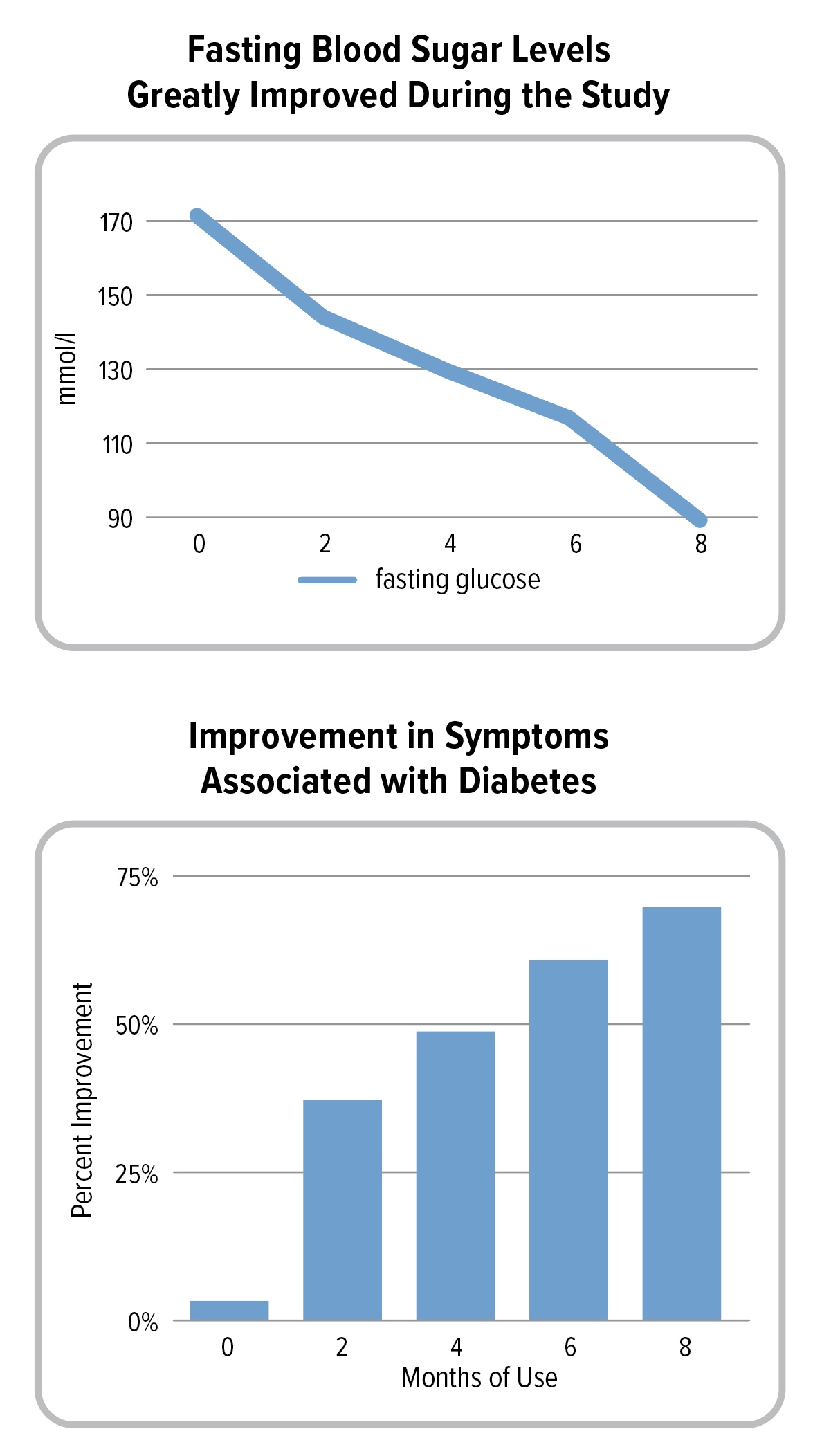FIGHT DIABETES WITH CLINICALLY STUDIED HINTONIA LATIFLORA
“The high rates of type 2 diabetes are alarming. Certainly, lifestyle changes, including a sensible diet and exercise can go a long way to reducing blood sugar. But if you struggle with this problem, you have an ally in your corner—Hintonia latiflora. This clinically studied herb shows amazing results—including reduced A1C levels and in some cases even replacing medications entirely!”
Hintonia concentrate for the dietary treatment of increased blood sugar values: Results of a multicentric, prospective, non-interventional study with a defined dry concentrate of Hintonia latiflora.
Schmidt M, Hladikova M. Naturheilpraxis. Feb. 2014. (Translated).

Background: Preparations from the bark of Hintonia latiflora are used to regulate the blood sugar levels. The objective of this study was to prove the nutritional benefit within the framework of a dietary treatment of increased blood sugar values with pre-diabetes and slight diabetes type 2 as well as the assessment of the tolerance and application safety.
Method: In an open, prospective, multicentric and non-interventional application study, the effects of a dry concentrate from the bark of Hintonia latiflora in the form of capsules were examined for the laboratory parameters of the blood sugar levels (HbA1c, fasting and postprandial glucose) as well as for the development of diabetic accompanying symptoms (sweating, gastrointestinal symptoms, paraesthesia, itching and neuropathies). Particular attention was also given to the tolerance and (if available) further clinical (laboratory) parameters (blood pressure, liver values and blood lipids). An eight-month treatment was documented in 178 test persons with type 2 diabetes/pre-diabetes, who were treated with oral antidiabetics and/or insulin or only with a diet.
Results: At the end of the study, 177 data records were available. The HbA1c values improved over the course of the study with a high level of clinical relevance and significance from 7.2 ± 0.4% to 6.4 ± 0.5%, in accordance with a relative improvement by 10.4% (p < 0.0001). In parallel, the values of fasting and postprandial glucose also improved by an average of 23.3 ± 12.5% (from 152.1 ± 27.4 mmol/l to 114.4 ± 18.2 mmol/l) and 24.9 ± 11.4% (from 189.5 ± 34.1 mmol/l to 140.1 ± 22.3 mmol/l).
CLINICAL RESULTS SHOW
Hintonia latiflora combined with key nutrients for blood sugar control can:

WHAT THIS MEANS FOR YOU
The sum score of the diabetic accompanying symptoms improved from initially 4.8 points to 1.3 points at the end of the study. Improvements were also determined in blood pressure, blood fats and liver values. The tolerance was excellent, no unwanted effects occurred, in particular no hypoglycemic episodes. In 55 of 114 patients with antidiabetic medication 39.5%(sic) [48 percent], the substance could be reduced (n = 45) or stopped entirely (n = 10). [In half the patients taking antidiabetic medications, the medications could be reduced or stopped entirely by the end of the study. Ed ]
Conclusions: The study confirms the positive effects of the dry concentrate from the bark of Hintonia latiflora on the main parameters of the blood sugar levels and the diabetic accompanying symptoms. In the event of pre-diabetes or minor cases of type 2 diabetes mellitus, this can contribute towards stabilizing the blood sugar homeostasis in particular, achieving a lower load from accompanying medication and deferring the necessity of using oral antidiabetic drugs and/or insulin.
WHAT THIS MEANS TO YOU:
The CDC reports that about 84 million Americans have pre-diabetes–abnormally high blood sugar but not yet the level of type 2 diabetes. That’s in addition to the almost 30 million Americans who do have type 2 diabetes–almost 24 percent of whom don’t know it yet.
Hintonia has been clinically studied in Europe for over 60 years to help people with both pre- and type 2 diabetes. This particular study tested a number of parameters: fasting glucose levels, physical consequences of diabetes (sweating, itching, excessive thirst, frequent urination, nerve sensations caused by neuropathy) and hemoglobin A1C (commonly referred to as “A1C.”)
By the end of the study, the results were impressive. The participants’ A1C levels improved by an average of 10.4 percent (which is quite significant), and fasting glucose improved by an average of 23.3 percent.
Throughout the duration of the study, individuals taking anti-diabetic prescription drugs added the hintonia and nutrient combination to their existing regimen. By the end of the study, of the 114 patients using antidiabetic drugs at the beginning of the study, 45 reduced their medication and 10 participants stopped using medication entirely because it was no longer necessary.

We recommend 100 mg of Copalchi (Hintonia latiflora) Bark Extract in combination with the following ingredients: 30 mg Vitamin C, 5 mg Vitamin E, 0.7 mg Thiamin, 0.8 mg Riboflavin, 1 mg Vitamin B6, 170 mcg Folate, 0.5 mcg Vitamin B12, 50 mcg Biotin, 5 mg Zinc, and 25 mcg Chromium.


